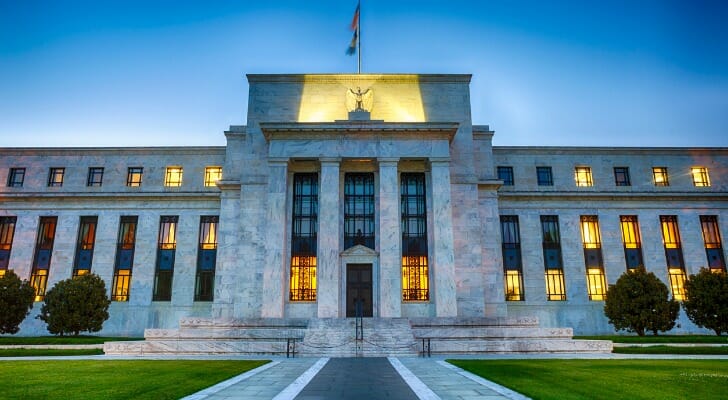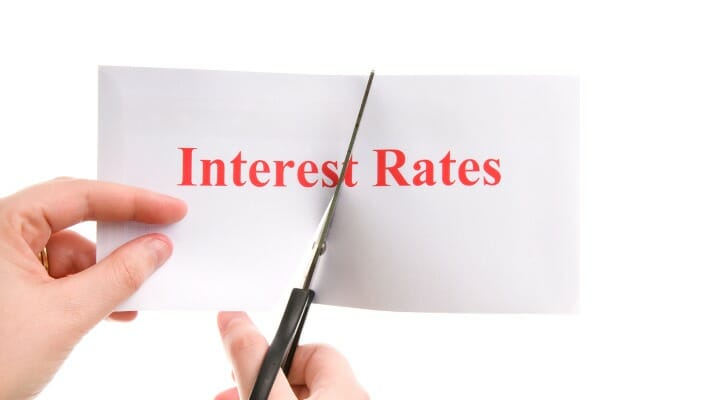Interest rate changes can have a huge impact on your personal finances, income, investments – even employment. They affect how much you pay for loans, from credit cards to mortgages; they influence the price you pay for a cup of coffee; and they can even influence whether you get hired or get a raise. It’s important to understand the potential impact so that you can plan accordingly.
Federal Reserve Control of Interest Rates
After the stock market crash of 1929, the federal government passed a series of banking reform laws intended to prevent another Great Depression. One of those reforms is called the reserve requirement. It requires commercial banks to keep a certain amount of cash on hand, in reserve, each night. This is called the reserve requirement ratio, and for most banks, it comes to 10 percent of the total amount of assets on deposit.
Instead of simply keeping that money idle, not earning any money for banks, at the end of each business day most banks either borrow to cover their reserve requirements or lend any excess capital they have to banks that need to beef up their reserves. This lets them fulfill their daily requirements without leaving their money just sitting in a vault all the time. The interest that banks charge for this overnight lending is called the federal funds rate, and it is controlled by the Federal Reserve, the U.S. central bank.
Why Interest Rates Matter to You
When the Fed tweaks the federal funds rate, it immediately affects the prime interest rate, a benchmark interest rate that banks charge customers with excellent credit for most forms of lending. Generally, when banks set interest, they do so around the prime rate. A given loan will, for example, be set at prime plus or minus some percentage point.
This is also true of variable interest rates. While fixed rates mean that you pay a specified interest for the lifetime of the loan, variable interest means that your rate can change over time. In both cases, it’s common for the lender to build the interest rate around the prime.
Whether you have a credit card, a mortgage, an auto loan or even a student loan, the federal funds rate helps determine your interest. When the Fed cuts the federal funds rate, variable rates can decrease, and new loans get cheaper. When it raises the federal funds rate, the opposite happens. The exact relationship depends on the various types of loans. For example, the federal funds rate tends to influence auto loans more than mortgages, but they all reflect this reality.
This is why there tends to be a flurry of lending before rates go up. Savvy consumers who want a loan will often try to lock in an interest rate before the hike.
Stocks and Interest Rates
Interest rate changes affect the equities you invest in. That’s because when rates go up, this tends to decrease business activity. The lending that companies rely on for any major purchases gets more expensive, slowing down spending and expansion in the business sector. The reverse happens when rates fall. Borrowing gets cheaper, generally leading more companies to take out loans and make significant purchases.
The stock market tends to reflect this. A rate cut generally causes the market to grow more quickly, reflecting the more active business environment. A rate hike slows all of that. No matter what kind of portfolio you have, those changes will show up in your own investments.
While a rate cut often benefits stock investors, it can be a hardship for people, like retirees, who depend on interest income. A lower federal funds rate means the interest paid on savings accounts and certificates of deposit declines.
Jobs and Inflation
The Federal Reserve has a dual mandate. Congress has tasked it with maximizing employment while controlling inflation, both of which are affected by interest rate changes. By cutting interest rates, the Fed aims to increase hiring in the private sector. Lower rates make it easier for businesses to borrow and spend. This in turn creates jobs due to that new economic activity.
However, prolonged periods of economic activity can drive inflation, typically because of increased consumer spending power. When the Fed feels that there is a risk of inflation past its typical goal of 2 percent it will raise rates. This slows down business activity, reducing the likelihood of inflation. Unfortunately, this mostly controls inflation through reduced consumer spending power, which generally means lower wages and lost jobs.
The Bottom Line
The Fed uses its federal fund’s rate to control what businesses and consumers “pay” for money. When the U.S. central bank makes money less expensive, that is, cuts interest rates, businesses spend more, including on hiring, and consumer spending increases. The opposite happens when the Fed makes money more expensive, that is, hikes interest rates.
Tips for Financial Planning
- Consider talking to a financial advisor about how well your investments can absorb a change in interest rates. Finding a financial advisor doesn’t have to be hard. SmartAsset’s free tool matches you with up to three vetted financial advisors who serve your area, and you can interview your advisor matches at no cost to decide which one is right for you. If you’re ready to find an advisor who can help you achieve your financial goals, get started now.
- If you own bonds, keep in mind that interest rate changes affect those securities, too. Since the price of a bond moves in the opposite direction of its yield, an interest rate cut will increase the price of a bond. As bond prices rise, demand for them declines. Also, note that the longer the term of a bond, the more sensitive it is to an interest rate change. These changes will affect the value of your investment portfolio.
Photo credit: ©iStock.com/traveler1116, ©iStock.com/RichHobson, ©iStock.com/RainStar


